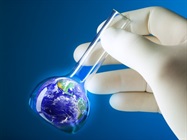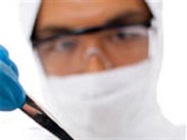-

-
The recent decriminalization of cannabis in many states and countries has left scientists and government agencies scrambling to set up testing processes and regulations. One of the biggest concerns of a cannabis testing lab is safety. Cannabis has several known contaminants, including pesticides, heavy metals, residual solvents, and mycotoxins. In addition, it is often necessary to confirm strain and test for the presence of cannabinoids and terpenes to determine potency and effect.

-
Clinical diagnostics is an area that helps to detect health and disease state markers, which includes testing for metabolic markers (blood chemistry) such as glucose, urea, and potassium; liver function tests; heart disease and heart attack indicators; thyroid disease markers; various blood cell counts and blood cell size; viral and microbial infection such as HIV or H. pylori; and immunological markers and antibodies.

-
Environmental testing can identify and quantify compounds and pollutants in air, water, or soil. Alternatively, environmental testing can verify that a product or piece of equipment will perform as expected once it is out in the world. This can take the form of climate testing (e.g. temperature or humidity) or mechanical testing (e.g. measuring shock or vibration). The increased worldwide attention focused on environmental testing has heightened demand for instrumentation, including sensitive analytical tests to identify pesticides, polycyclic aromatic hydrocarbons (PAHs), polychlorinated biphenyls (PCBs), and more.

-
Food and beverage testing lab equipment is used to evaluate the quality and integrity of solid and liquid food samples. Food safety is a key topic of concern among consumers and the future of food safety starts with testing in the laboratory or on the field. Although food testing is critical for food safety, food testing is also applicable for standard quality control. Applications include food chemistry analysis, food microbiology testing, nutrition analysis, allergen analysis, toxin analysis, shelf-life studies, and quality control determination. Food testing compliance includes FDA/BAM, USDA, FSIS, ISO, USP, AOAC, and CMMEP.

-
Forensic lab equipment is used to detect, collect, and process samples and evidence for further evaluation and determination. Some of the key measurements that forensic labs perform are: trace evidence analysis, fingerprinting and DNA identification, evaluation of body fluids, compound determination, such as drugs or other hazardous chemicals, and more. Additional segments of forensic studies includes DNA forensics, forensic chemistry, serology, toxicology, and more.

-
In materials research and testing, the relationship between the structure and properties of materials is studied, often at the atomic or molecular level. Biomaterials, ceramics, polymers, nanomaterials, thin films, and devices are areas of interest in this field. The knowledge gained is used to assess quality, reliability, and safety, and is often used to produce new materials with specific desired properties. Metallurgy focuses on the structure and processing of metals and their alloys.
-

-
There are many key developmental phases, services, and processes within pharma and drug discovery laboratories. Pharmaceutical development includes (but is not limited to) formulation, such as API, preformuation, screening, etc; preclinical development, such as pharmacology services, ADME-Tox, biomarker testing, and more.